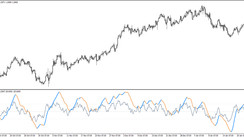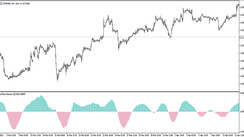Introduction to Trend Trading: A Game of Trends and Timing
Trend trading is a method that capitalizes on market trends. The key is to discern the market's current direction and ride the wave. This technique banks on the premise that asset prices tend to move in a single direction for a considerable length of time. The essence of trend trading lies in spotting the trend and trading accordingly, exiting when the trend shows signs of reversal.
Trend trading approaches can be bifurcated into two main categories:
- Short-Term Trend Trading: This targets short-term trends that usually span a few days to weeks.
- Long-Term Trend Trading: This zeroes in on long-term trends, extending for several months or even years.
The best trend trading technique will hinge on your trading approach and risk acceptance. Short-term traders need to swiftly spot and trade short-term trends, while long-term traders require patience and resilience to endure short-term market volatilities.
Techniques to Spot Market Trends
Various technical indicators assist in discerning trends. Some prevalent ones include:
-
Moving Averages: These are a fundamental yet potent way to spot trends. A moving average plots a line that represents the mean closing price of an asset over a specified duration. For instance, a 50-day moving average is drawn by averaging the closing prices of an asset over the previous 50 days. If the asset's price surpasses its moving average, it is considered an uptrend, and if it's beneath its moving average, it's seen as a downtrend.
-
Relative Strength Index (RSI): RSI is a momentum indicator gauging the velocity and magnitude of price alterations. A score over 70 suggests the asset is overbought, indicating an imminent correction. A score under 30 implies the asset is oversold, signifying a potential rally.
-
Bollinger Bands: Bollinger Bands are a volatility indicator that leverage moving averages and standard deviations to generate bands around an asset's price. When the price breaches these bands, it could indicate a forthcoming trend shift.
Once a trend is identified, the next move is to decide whether to take a long or short position.
- Long Positions: A long position is essentially a wager that the asset's price will rise. To establish a long position, you'd purchase the asset.
- Short Positions: A short position is effectively a gamble that the asset's price will fall. To initiate a short position, you'd short sell the asset.
Risk Management in Trend Trading
It's crucial to diligently manage risk while trend trading. One method to achieve this is by employing stop-losses, which are orders that trigger an automatic sale of your asset if its price descends beyond a specific threshold. This tactic can help mitigate losses if the trend takes an unexpected turn.
Conclusion
Trend trading can be a lucrative strategy, yet it's vital to understand that no strategy comes with a success guarantee. Thorough research and crafting a trading plan that aligns with your individual requirements and risk appetite is of paramount importance.





